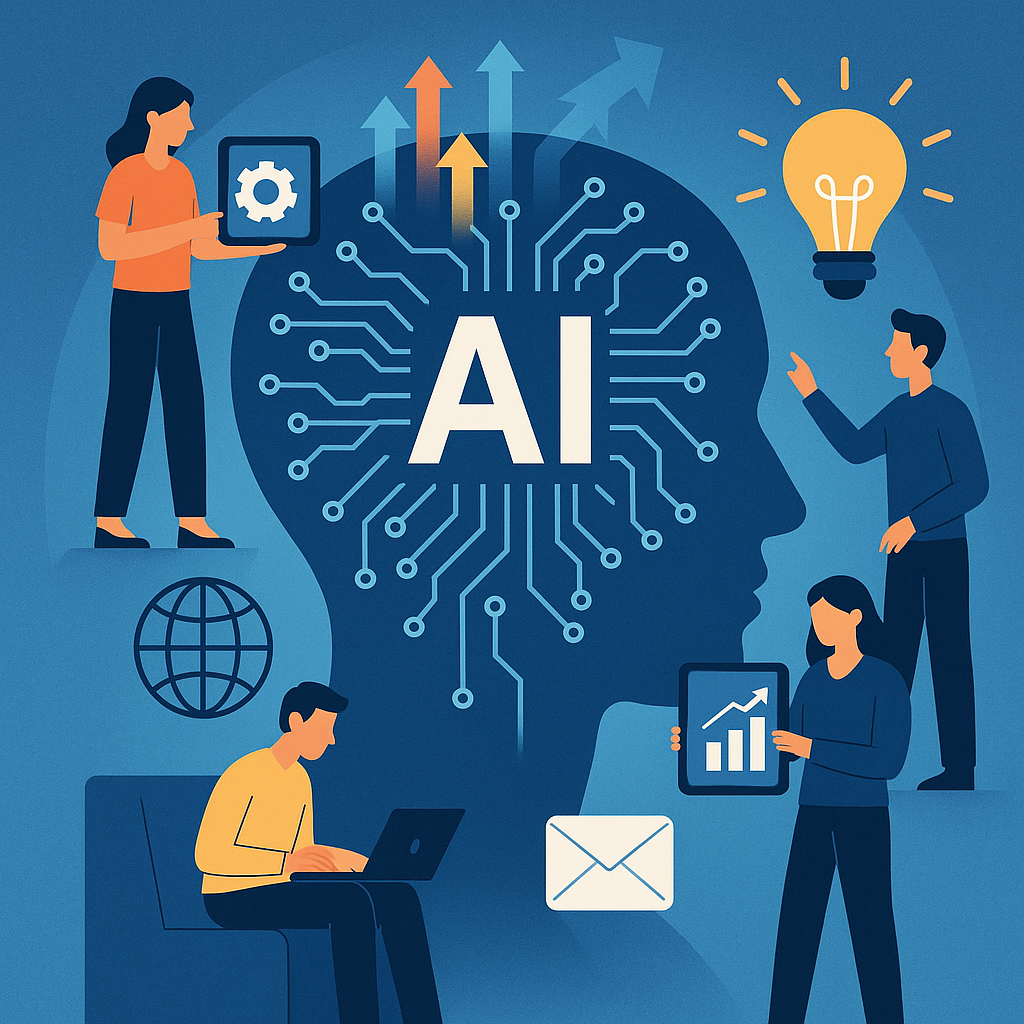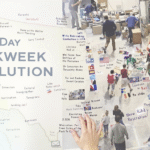Introduction: AI Is No Longer the Future — It’s Here
In 2025, generative AI isn’t a niche tech term anymore — it’s as common as smartphones and Wi-Fi. What started as a novelty with chatbots and image generators has now evolved into a daily companion for millions of Americans. Whether you’re drafting emails, planning family meals, or creating an art project, AI quietly works behind the scenes to make life faster, easier, and more creative.
In this post, we’ll explore real U.S.-based examples of how generative AI is reshaping life at work, at home, and in school — plus what’s next as AI becomes as indispensable as electricity.

How Generative AI Works (In Simple Terms)
Generative AI uses advanced machine learning models trained on huge datasets to produce new content — from text and images to videos and music. Think of it as an ultra-fast collaborator: you provide instructions (called prompts), and it responds with original output in seconds.
Popular tools in 2025 include:
-
ChatGPT-5 for natural conversations and task automation.
-
Midjourney & DALL·E 4 for stunning image creation.
-
Synthesia for AI-generated video presentations.
-
Claude 3.5 for long-form research and writing.
AI at Work: Boosting Productivity & Creativity
In U.S. offices, AI assistants have become as essential as email. Companies are using them to:
-
Draft and polish content: Marketing teams create ad copy in minutes.
-
Automate reports: Sales managers generate weekly dashboards without touching Excel.
-
Enhance brainstorming: AI tools suggest creative angles for campaigns or product names.
-
Speed up customer support: AI chatbots resolve common queries 24/7, freeing up human agents.
Example:
A mid-sized California law firm uses AI to summarize case law, cutting research time by 40%. This means lawyers spend more time strategizing and less time digging through documents.
AI at Home: Your Invisible Personal Assistant
In American households, AI now runs like a silent co-pilot:
-
Meal planning: Apps like ChefGPT suggest recipes based on pantry items and dietary needs.
-
Budgeting: AI finance tools track spending and recommend savings strategies.
-
Home automation: Smart devices, powered by AI, adjust lighting, temperature, and security settings based on your habits.
Example:
A busy New York family uses AI meal planning integrated with their smart fridge. It scans inventory, suggests recipes, and adds missing ingredients to their grocery delivery app automatically.
AI in Education: Personalized Learning for Every Student
From elementary school to college, AI is helping U.S. students learn smarter, not harder:
-
Tailored lessons: AI platforms adapt difficulty based on student progress.
-
Instant tutoring: 24/7 homework help for math, science, and languages.
-
Creative projects: Students use AI to produce videos, podcasts, and art for assignments.
Example:
A Texas high school uses AI to give real-time writing feedback, improving students’ grammar and clarity before they turn in assignments.
The Hidden Benefits: Accessibility & Inclusion
Generative AI is breaking barriers for people with disabilities:
-
Voice-to-text tools help those with hearing impairments follow meetings.
-
AI captions instantly translate live events into multiple languages.
-
Image descriptions make online content more accessible to the visually impaired.
U.S. Trends Driving AI Adoption in 2025
Several forces have accelerated AI integration:
-
Affordable access: Many AI tools now offer free tiers.
-
Remote work culture: Demand for automation and collaboration tools has soared.
-
AI literacy: More Americans are comfortable using prompts and customizing AI outputs.
-
Government and corporate investment: Funding is pouring into AI research and training.
Challenges & Ethical Considerations
While AI brings convenience, it’s not without risks:
-
Misinformation: Generative AI can produce convincing but false content.
-
Privacy concerns: AI tools process personal data — security is critical.
-
Bias in outputs: AI may reflect biases from its training data.
This means responsible use and digital literacy are more important than ever.
What’s Next? The AI of Tomorrow
Looking ahead, experts predict:
-
Hyper-personalized AI: Assistants that understand your preferences without prompts.
-
Seamless integration: AI embedded into AR glasses and wearables.
-
Voice-first interaction: Hands-free AI for driving, cooking, and multitasking.
Conclusion: Living with AI, Not Just Using It
In 2025, generative AI isn’t replacing humans — it’s amplifying what we can do. From offices to classrooms to living rooms, it’s becoming a trusted partner in productivity, creativity, and problem-solving.
The question for Americans now isn’t whether to use AI, but how to use it wisely.
Call to Action:
Have you used AI today? Share your experience in the comments and tell us how it’s changed your work, home, or school life. If you found this guide useful, share it with a friend — they might just discover their new favorite AI tool.
For more articles, please check here.








